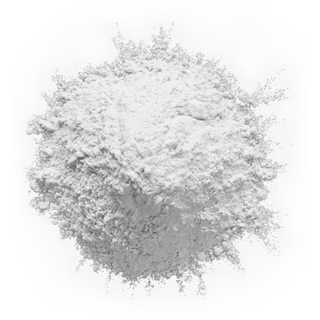The Ultimate Guide To Creatine: Benefits, Risks, And Usage

Table of Contents
The Science Behind Creatine
What is Creatine and How Does it Work?
Creatine is a naturally occurring organic acid primarily found in skeletal muscle. It plays a crucial role in ATP (adenosine triphosphate) resynthesis, the process that provides energy for muscle contractions. When you engage in high-intensity exercise, your body depletes its ATP stores quickly. Creatine supplementation increases your creatine phosphate levels, leading to faster ATP resynthesis and improved energy availability for your muscles. This translates to enhanced performance during short bursts of intense activity.
Several types of creatine exist, with creatine monohydrate being the most researched and widely used form due to its high bioavailability and effectiveness. Other forms, such as creatine hydrochloride (HCL) and creatine ethyl ester, claim improved absorption and reduced side effects, but more research is needed to definitively confirm these claims. Understanding the differences in creatine supplementation is key for optimizing your results. Key terms to remember are creatine phosphate, ATP resynthesis, and muscle energy – all vital components of how creatine works within your body.
Creatine Benefits for Athletes and Fitness Enthusiasts
The benefits of creatine extend beyond increased energy production. Numerous studies have demonstrated its positive effects on:
- Increased Strength and Power: Creatine supplementation has been shown to significantly improve high-intensity exercise performance, leading to gains in strength, power output, and overall athletic capabilities. Think explosive lifts, faster sprints, and improved jump height. These gains are often seen in various athletic disciplines, from weightlifting to sprinting.
- Enhanced Muscle Growth: Creatine promotes muscle protein synthesis and hypertrophy (muscle growth). By providing more energy for muscle contractions, creatine allows for more intense and frequent training sessions, leading to increased muscle mass and lean muscle mass gains. Studies have repeatedly shown a positive correlation between creatine use and increased muscle size.
- Improved Cognitive Function: While less widely studied than its effects on physical performance, some research suggests creatine may have modest benefits for cognitive function, particularly in individuals with cognitive impairments or those undergoing strenuous mental activities. However, more research is needed to fully understand these effects.
These benefits are supported by a large body of scientific evidence, making creatine a popular and effective supplement for athletes and fitness enthusiasts aiming to improve their strength, power, and muscle mass. Keywords such as muscle strength, power output, muscle hypertrophy, and lean muscle mass all highlight the significant impact of creatine.
Potential Risks and Side Effects of Creatine
While generally safe for most healthy individuals, creatine supplementation can come with potential side effects.
Common Side Effects
The most common side effects are typically mild and temporary:
- Water Retention: Creatine draws water into muscle cells, leading to temporary weight gain and bloating. This is often perceived as a positive side effect due to its impact on muscle size and fullness.
- Gastrointestinal Issues: Some individuals experience mild gastrointestinal distress such as nausea, cramping, or diarrhea, particularly when starting creatine supplementation.
- Muscle Cramps: While rare, some individuals may experience increased muscle cramps. This is usually associated with dehydration or electrolyte imbalances, highlighting the need for proper hydration.
These side effects are usually manageable and often diminish with continued use. The key is to start with a lower dose and increase gradually. Remember keywords like creatine side effects, water retention, bloating, and gastrointestinal distress when researching this aspect.
Who Should Avoid Creatine?
Despite its general safety, certain individuals should avoid creatine or consult their doctor before using it:
- Individuals with Kidney Problems: Creatine is processed by the kidneys, so those with pre-existing kidney conditions should exercise caution.
- Individuals with Liver Disease: Similarly, those with liver problems should consult a doctor before starting creatine supplementation.
- Individuals on Certain Medications: Creatine may interact with certain medications. It’s crucial to disclose creatine usage to your physician if you are on any medication.
By understanding the creatine contraindications, kidney health, liver health, and potential medication interactions, you can ensure safe and responsible use.
The Ultimate Guide to Creatine Usage
Choosing the Right Creatine Supplement
The market offers various creatine supplements. However, creatine monohydrate remains the gold standard due to extensive research supporting its effectiveness and safety. When choosing a supplement, look for:
- Reputable Brands: Opt for well-established brands with a history of producing high-quality supplements.
- Third-Party Testing: Choose supplements that have been tested by independent third-party laboratories to verify purity and label accuracy. This ensures you're getting what the label says.
- Micronized Creatine: Micronized creatine monohydrate has smaller particles that improve solubility and reduce the likelihood of gastrointestinal issues.
Keywords like creatine monohydrate, creatine HCL, creatine ethyl ester, and creatine supplement brands will help you navigate this aspect.
Optimal Creatine Dosage and Cycling
The typical creatine dosage involves a loading phase and a maintenance phase.
- Loading Phase: Consume 20 grams of creatine monohydrate per day, divided into 4-5 doses, for the first 5-7 days. This quickly saturates your muscles with creatine.
- Maintenance Phase: After the loading phase, reduce your dosage to 3-5 grams per day to maintain muscle creatine levels.
Creatine cycling (periods of supplementation followed by periods of discontinuation) is a common practice, but its benefits are not conclusively proven. Consult a professional to determine the best approach for you. Understanding the creatine dosage, loading phase, maintenance phase, and creatine cycling strategies is key for maximizing benefits and minimizing side effects.
Combining Creatine with Other Supplements and Training
Creatine can synergistically work with other supplements, particularly protein powder. Combining creatine with a well-rounded training program and proper nutrition is crucial for maximizing results. Remember that creatine and protein are often recommended together, but a consistent workout routine and nutrition plan are equally critical components of successful training. The synergistic effects of creatine combined with a holistic approach will significantly improve your gains.
Conclusion
Creatine, when used correctly, can be a valuable tool for enhancing athletic performance and promoting muscle growth. We’ve explored its scientific basis, potential benefits, and associated risks. Remember that responsible usage is paramount. This includes understanding the optimal creatine dosage, choosing reputable supplements, and being aware of potential side effects.
To optimize your creatine usage and unlock the power of creatine for your fitness journey, make informed decisions based on your individual needs and always consult a healthcare professional before starting any new supplement regimen. Learn more about creatine, find the best creatine for you, and take the next step toward achieving your fitness goals safely and effectively. Remember that while creatine can be a powerful tool, it’s just one piece of the puzzle. Consistent training, a balanced diet, and proper rest remain essential for maximizing results.

Featured Posts
-
 Carsamba Ledra Pal Da Dijital Veri Tabani Isguecue Piyasasi Rehberi Sunumu
May 15, 2025
Carsamba Ledra Pal Da Dijital Veri Tabani Isguecue Piyasasi Rehberi Sunumu
May 15, 2025 -
 Heat Butler Rift Jersey Numbers Highlight Deep Seated Tension Hall Of Famers Involvement
May 15, 2025
Heat Butler Rift Jersey Numbers Highlight Deep Seated Tension Hall Of Famers Involvement
May 15, 2025 -
 Mlb Dfs Strategy May 8th Sleeper Picks And One Batter To Avoid
May 15, 2025
Mlb Dfs Strategy May 8th Sleeper Picks And One Batter To Avoid
May 15, 2025 -
 The Sobering Truth Why Womens Alcohol Consumption Is Worrying Doctors
May 15, 2025
The Sobering Truth Why Womens Alcohol Consumption Is Worrying Doctors
May 15, 2025 -
 2025 Steam Sales A Comprehensive Guide To Dates And Deals
May 15, 2025
2025 Steam Sales A Comprehensive Guide To Dates And Deals
May 15, 2025
